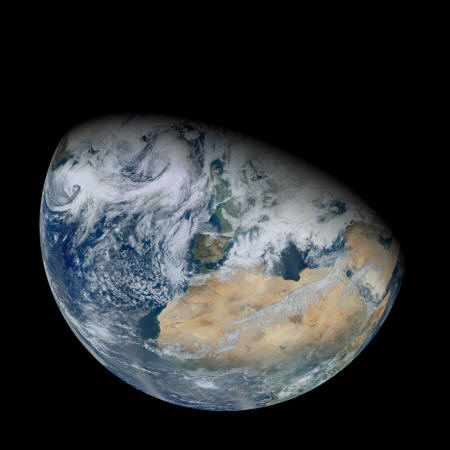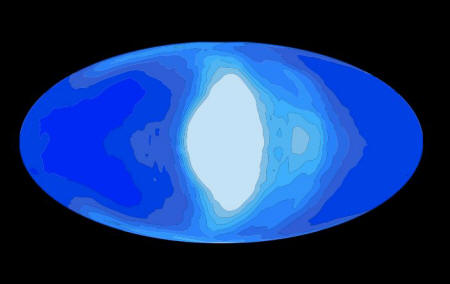|
Clouds exert a major influence on Earth's climate
and they could
impact the climate on alien planets, too, researchers say.
Though only about dozen potentially habitable exoplanets have been detected so far, scientists say the universe should be teeming with alien worlds that could support life.
The Milky Way alone may host 60 billion such planets around faint red dwarf stars, a new estimate suggests.
Based on data from NASA's planet-hunting Kepler spacecraft, scientists have predicted that there should be one Earth-size planet in the habitable zone of each red dwarf, the most common type of star.
But a group of researchers has now doubled that estimate after considering how cloud cover might help an alien planet support life.
The habitable zone is defined as the region where a planet has the right temperature to keep liquid water on its surface, thought to be a requirement for life as we know it.
This illustration shows simulated cloud coverage (white)
on a tidally locked
planet (blue) that would be orbiting a red dwarf star.
If a planet is too far from its star, its water freezes; too close, water vaporizes.
Since red dwarfs are dimmer and cooler than our sun, their habitable zone is much cozier than our solar system's.
With such a snug orbit, a habitable planet around a red dwarf would become tidally locked, meaning it would always have one side facing its star, much like the moon faces Earth.
This side would see eternal daylight.
In the new study, the researchers used 3D simulations to model the way air and moisture would move over a planet tidally locked around a red dwarf.
The team found that any surface water would result in water clouds. What's more, highly reflective clouds would build at the point of the star-facing side where it's always high noon.
This would have a cooling effect in the inner ring of the habitable zone, meaning the planets there would be able to sustain water on their surfaces much closer to their star, the researchers say.
The findings could give scientists a new way to confirm the presence of liquid water on the surface of alien planets with the James Webb Space Telescope (JWST), a new space-based observatory scheduled for launch in 2018, the researchers say.
The same could be true of a habitable exoplanet with a highly reflective cloud cover, the researchers say.
If JWST detects a similar cold signal over the dayside of an alien world, Abbot said,
The research was detailed June 27 in the journal Astrophysical Journal Letters.
|


